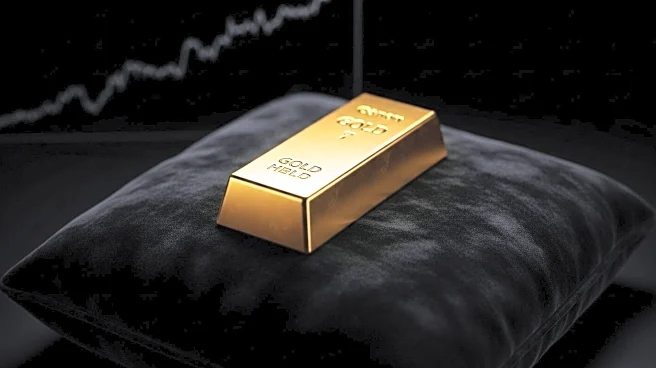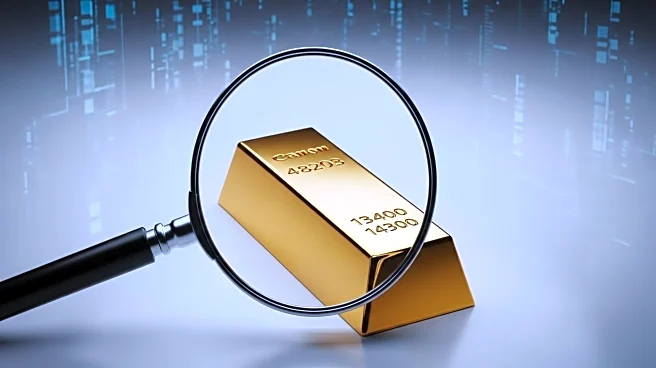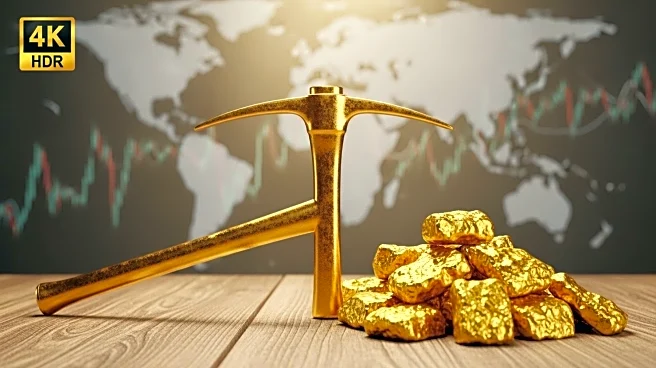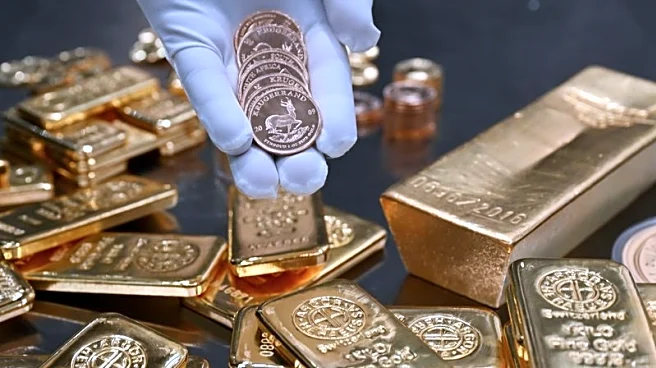What's Happening?
Global central banks have significantly increased their gold purchases, buying over 1,000 tonnes annually for the past three years, according to the World Gold Council. This surge in institutional demand has led to a record $407 billion in assets under management for gold ETFs as of August, following three months of inflows totaling over $18 billion. The increased buying coincides with a rise in mergers and acquisitions within the gold sector, with deals up 32% in 2024, accounting for 70% of all mining M&A activity. Companies like RUA GOLD Inc., i-80 Gold Corp., OceanaGold Corporation, Osisko Development Corp., and New Found Gold Corp. are benefiting from these conditions, delivering high-grade exploration results and expanding resource bases.
Why It's Important?
The increased gold purchases by central banks and the subsequent rise in gold ETF assets highlight a growing institutional interest in gold as a stable investment amid economic uncertainties. This trend is driving strategic consolidation in the gold mining industry, offering companies the opportunity to scale operations and leverage resources. The focus on high-grade exploration successes in politically stable regions is attracting investors seeking exposure to new gold discoveries. The ongoing consolidation and exploration efforts could lead to significant growth in the gold sector, impacting investment strategies and resource allocation.
What's Next?
The gold sector is poised for further growth as companies continue to expand their exploration and resource development efforts. RUA GOLD Inc. plans to mobilize additional drilling rigs and target over 4,000 meters of new drilling to grow its gold-antimony resource. Other companies are advancing feasibility studies and resource conversion programs, aiming to capitalize on the favorable market conditions. The continued institutional momentum and strategic consolidation are likely to drive further investment and development in the gold industry.
Beyond the Headlines
The surge in gold purchases and ETF inflows reflects broader economic concerns, including potential rate cuts and currency fluctuations. The strategic focus on high-grade exploration in stable jurisdictions underscores the importance of geopolitical stability in resource investment decisions. The dual-commodity advantage of gold and antimony, particularly in light of China's export restrictions, highlights the critical role of mineral resources in global economic strategies.











